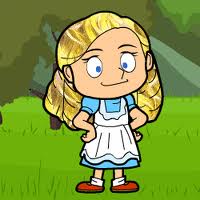 Once upon a time there was a young girl called Goldilocks. Goldilocks was a curious creature and one day during a discussion with her line manager, Goldilocks identified that she had a learning need.
Once upon a time there was a young girl called Goldilocks. Goldilocks was a curious creature and one day during a discussion with her line manager, Goldilocks identified that she had a learning need.
Having identified what she needed to learn, she set about finding a learning solution. The first course (the longest, most expensive one) she went on was overwhelming. The facilitator and other delegates talked about things Goldilocks just didn’t understand. She felt out of her depth and came away from the course feeling like she hadn’t learnt anything.
She decided to try again with another learning solution. This medium length course was dull. Golidlocks felt that she knew most of the course content already. Consequently Goldilocks disengaged from the session and came away again feeling like she had learnt nothing.
Goldilocks decided to try for a third and final time. This, the shortest of the options available, turned out to be just right. There was material which was familiar to Golidlocks but also material which provided a good level of challenge to her. She left this course feeling motivated, uplifted and like she had developed her skills and knowledge to the next level.
The morale of this tale? According to research (http://bit.ly/18MRJpM) people learn best when there is just the right amount of challenge in their learning, not too much or too little. Named The Goldilocks Effect, this research considered how babies learn, but researchers believe that this reveals something about how the brain works and therefore how anyone learns.
The challenge for us as L&D folk is being able to develop learning solutions which are generic enough to deliver across the required portion of the workforce whilst providing each individual learner with just the right level of challenge for them to make the learning engaging.
How do you ensure the challenge in your learning is “just right”?
Note: Just for clarity, I’m not suggesting the shortest training solution is the best, it’s just that is the format of the original fairy tale! ![]()
 Once upon a time there was a young girl called Goldilocks. Goldilocks was a curious creature and one day during a discussion with her line manager, Goldilocks identified that she had a learning need.
Once upon a time there was a young girl called Goldilocks. Goldilocks was a curious creature and one day during a discussion with her line manager, Goldilocks identified that she had a learning need.
Having identified what she needed to learn, she set about finding a learning solution. The first course (the longest, most expensive one) she went on was overwhelming. The facilitator and other delegates talked about things Goldilocks just didn’t understand. She felt out of her depth and came away from the course feeling like she hadn’t learnt anything.
She decided to try again with another learning solution. This medium length course was dull. Golidlocks felt that she knew most of the course content already. Consequently Goldilocks disengaged from the session and came away again feeling like she had learnt nothing.
Goldilocks decided to try for a third and final time. This, the shortest of the options available, turned out to be just right. There was material which was familiar to Golidlocks but also material which provided a good level of challenge to her. She left this course feeling motivated, uplifted and like she had developed her skills and knowledge to the next level.
The morale of this tale? According to research (http://bit.ly/18MRJpM) people learn best when there is just the right amount of challenge in their learning, not too much or too little. Named The Goldilocks Effect, this research considered how babies learn, but researchers believe that this reveals something about how the brain works and therefore how anyone learns.
The challenge for us as L&D folk is being able to develop learning solutions which are generic enough to deliver across the required portion of the workforce whilst providing each individual learner with just the right level of challenge for them to make the learning engaging.
How do you ensure the challenge in your learning is “just right”?
Note: Just for clarity, I’m not suggesting the shortest training solution is the best, it’s just that is the format of the original fairy tale! ![]()





